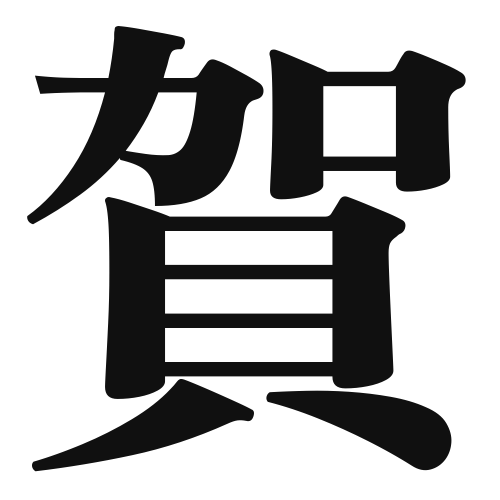1. Overview of Meaning
The kanji “賀” (pronounced “ga”) means “celebration” or “congratulation.” It is often used in contexts related to festivities, achievements, and well-wishing.
2. Formation and Radical
Formation of the Kanji: The kanji “賀” is a compound character, which means it is formed by combining different elements. It is classified as a 会意文字 (ideogram), where the components convey a combined meaning related to celebration.
Radical: The radical for “賀” is “喜” (ki), which means “joy” or “happiness.” This radical emphasizes the celebratory aspect of the character.
3. Examples of Usage
Common Words and Phrases: Some frequently used words that include “賀” are:
- 祝賀 (shukuga) – “celebration” or “congratulations”
- 賀状 (gajou) – “New Year’s card” or “greeting card”
Example Sentences in Daily Conversation:
- 彼の昇進を祝賀します! (Kare no shoushin o shukaga shimasu!) – “Congratulations on his promotion!”
- 新年の賀状を送ります。 (Shinnen no gajou o okurimasu.) – “I will send a New Year’s card.”
4. Synonyms and Antonyms
Similar Kanji: A similar kanji is “祝” (shuku), which also means “celebrate” but is more focused on the act of celebrating rather than the congratulatory aspect.
Opposite Kanji: An antonym could be “哀” (ai), which means “sorrow” or “grief,” representing a contrasting emotion to celebration.
5. Cultural and Historical Background
Relation to Japanese Culture: The kanji “賀” is often associated with various Japanese celebrations, such as weddings, New Year festivities, and other significant life events. It reflects the importance of community and shared joy in Japanese culture.
Proverbs and Idioms: One common phrase is “賀正” (gashou), which is used to wish someone a happy New Year, emphasizing the celebratory nature of the kanji.
